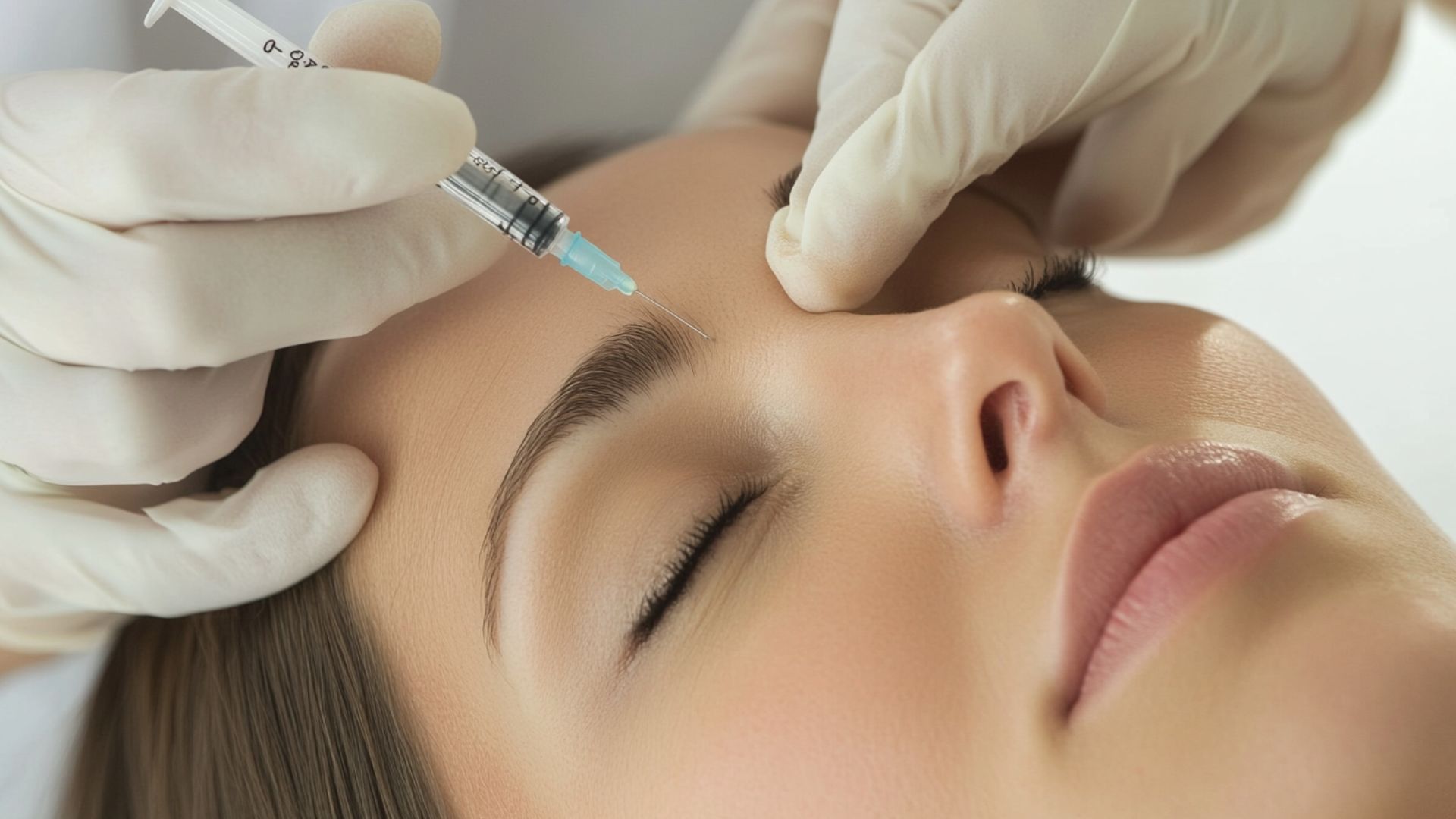Botox for migraine has revolutionized chronic pain management since the FDA approved onabotulinumtoxinA in 2010 as the first preventive treatment specifically for chronic migraine. Neurologists often recommend it when oral medications fail or cause intolerable side effects. Many patients struggle with daily medications that produce unwanted reactions, making Botox an appealing alternative that targets the nerves responsible for triggering migraine attacks.
Clinical studies demonstrate impressive results: injections can reduce headache days by half in most cases, with many patients experiencing lasting relief after just two treatment sessions. To qualify for Botox therapy, patients must experience 15 or more headache days per month, with treatments repeated every 12 weeks to maintain effectiveness.
Neurologists trust Botox’s proven track record, supported by decades of clinical use and consistent results. One of the most significant benefits is the reduced need for daily pain medication, which minimizes both dependence and side effects. Patients often report rapid improvements in their quality of life, including enhanced concentration, improved sleep, and increased overall well-being.
Understanding Chronic Migraine: Diagnosis and Clinical Criteria
Chronic migraine criteria is a debilitating neurological disorder that extends far beyond typical headache pain. These intense attacks can last for hours or even days, significantly affecting work performance, social life, and sleep quality. While episodic migraine occurs on fewer than 15 days per month, chronic migraine persists for 15 or more days per month for at least three consecutive months.
The condition often includes additional symptoms such as:
- Severe nausea and vomiting
- Extreme sensitivity to light (photophobia)
- Sensitivity to sound (phonophobia)
- Debilitating fatigue
- Visual disturbances or aura
Early diagnosis and proper management are crucial for reducing the frequency of attacks, preventing medication overuse, and improving overall quality of life.
To receive a diagnosis of chronic migraine, patients must meet specific criteria. They must experience headaches on 15 or more days per month for a period of three months or longer. Additionally, the patient must have a history of at least five prior migraine attacks.
On at least eight days per month for more than three months, these headaches must meet specific migraine criteria: unilateral location, pulsating quality, moderate to severe intensity, aggravation by routine physical activity, and accompanying symptoms of nausea, photophobia, or phonophobia. If the patient finds relief with triptans or ergot medications, this also satisfies the diagnostic criteria.
The diagnosis requires ruling out other causes through a comprehensive medical history, physical examination, and imaging when necessary. Conditions like medication-overuse headache must be excluded before confirming a chronic migraine criteria diagnosis.
How Botox Prevents Migraine Attacks and Reduces Pain
OnabotulinumtoxinA, commonly known as Botox, is an FDA-approved treatment specifically designed for migraine prevention in chronic migraine patients. The standard protocol involves injections every 12 weeks into 31 specific sites across seven head and neck areas, using a total of 155 units of the medication. This targeted approach works by blocking pain signals at the nerve level, thereby preventing attacks before they occur.
Clinical trials have demonstrated significant effectiveness: Botox can reduce the number of monthly headache days by an average of eight to nine days, with approximately half of all patients achieving a 50% or greater reduction in attack frequency. While not a cure, Botox substantially reduces both the frequency of attacks and the need for acute medications, offering lasting relief and helping patients restore normal daily functioning.
How Botox works to prevent migraines:
- Nerve signal interruption: Botox blocks the release of acetylcholine, a neurotransmitter that carries pain messages from peripheral nerves to the brain, effectively interrupting the pain pathway before symptoms develop.
- Muscle relaxation: By reducing tension in the muscles of the head, neck, and shoulders, Botox decreases pressure on sensitive nerve endings that can trigger migraine attacks.
- Pain pathway modulation: The treatment limits activation of peripheral sensory nerves that contribute to the development and persistence of chronic migraine criteria.
- Inflammation reduction: Botox prevents the release of inflammatory substances, particularly CGRP (calcitonin gene-related peptide), which amplifies pain signals and prolongs migraine attacks.
- Preventive effect: Unlike acute medications that treat symptoms after they appear, regular Botox injections stop migraines before they start, offering consistent migraine prevention rather than temporary relief.
Improvements develop gradually over successive treatment cycles. Patients typically notice a decrease in the frequency of headache days, reduced pain intensity, and a decrease in their reliance on acute medications. Side effects are generally mild and may include temporary neck stiffness or discomfort at injection sites. Long-term data confirms its safety profile over years of continuous use, empowering patients to reclaim control over their lives.
Who Qualifies for Botox Therapy: Patient Criteria
OnabotulinumtoxinA (Botox) offers targeted relief for individuals suffering from chronic migraine whose persistent headaches significantly impact daily life. To ensure safe and effective treatment, doctors follow specific guidelines to determine eligibility.
Qualification criteria for Botox therapy:
- Migraine frequency: Headaches must occur on 15 or more days per month for at least three consecutive months
- Migraine features: At least eight of those monthly headache days must meet the clinical definition of migraine
- Failed preventive medications: The patient must have tried and found insufficient relief from at least two to three oral preventive medications
- Confirmed diagnosis: A neurologist Botox or headache specialist must confirm a chronic migraine diagnosis based on clinical assessment
- Age requirement: FDA approval covers adults aged 18 and older
- Medication overuse management: The patient must not be overusing acute pain medications, or any overuse must be actively addressed
- Medical suitability: No known allergy to onabotulinumtoxinA migraine or history of neuromuscular disorders
- Treatment consistency: Patient must be able to attend regular treatment sessions every 12 weeks
Patients who meet these criteria are ideal candidates for Botox therapy. Over time, patients typically report fewer headache days, improved sleep quality, better mood and concentration, and significantly reduced reliance on acute medications.
The Botox Treatment Process: Injections, Areas, and Aftercare
Botox for migraine is a targeted preventive therapy administered by trained specialists to prevent chronic migraine attacks. The procedure involves precise injections into specific muscles of the head, neck, and shoulders known to be involved in migraine development. Before starting treatment, the specialist reviews the patient’s headache diary and medical history to tailor the approach to their specific needs.
The treatment procedure includes:
- Initial assessment: The clinician identifies tension points and anatomical areas linked to the patient’s specific migraine triggers
- Injection technique: Small, precise injections are administered using a very fine needle to minimize discomfort
- Number of injections: A standard treatment involves 31 injections distributed across predetermined anatomical sites
- Target areas: Injections are placed in the forehead, temples, back of the head, upper neck, and shoulders
- Dosage: A total of 155 units is distributed according to the standardized protocol
- Session duration: Most treatment sessions take approximately 15 to 30 minutes
- Comfort measures: Ice packs or topical numbing agents can be used to reduce any minor discomfort
Following treatment, Botox gradually reduces nerve sensitivity and relaxes muscle tension over the subsequent weeks. Most patients begin noticing a decrease in headache frequency and intensity after two to three treatment sessions.
After receiving Botox injections, patients should avoid lying down for four hours and refrain from rubbing or massaging the injection sites. Physical exercise and strenuous activity should be avoided for the remainder of the treatment day. Most people can return to normal activities immediately after the procedure.
Long-Term Benefits and Follow-Up Care
Botox therapy delivers sustained migraine relief for patients with chronic migraine criteria. After completing two to three treatment cycles, patients often experience eight to ten additional headache-free days per month compared to baseline. Quality of life improvements extend beyond pain reduction to include fewer work absences, improved social engagement, and reduced reliance on acute medications.
The benefits of Botox tend to compound over time with consistent treatment. Studies demonstrate that approximately 70% of patients who respond well to treatment maintain these gains at the five-year mark, with no loss of treatment effectiveness over time.
Long-term outcomes and benefits:
- Frequency reduction: Headaches occur significantly less often with consistent quarterly treatments
- Severity control: Pain intensity decreases progressively over multiple treatment sessions
- Reduced medication dependence: Substantially decreased need for acute pain relievers
- Improved sleep: Patients experience fewer nighttime disruptions and achieve more restorative rest
- Enhanced mood and cognition: Fewer migraines result in improved mental clarity and increased productivity
- Cumulative effectiveness: Benefits typically strengthen after the second or third treatment session
- Quality of life restoration: Enables full participation in work, social activities, and family life
- Customized treatment plans: Therapy can be adjusted based on individual response patterns
The effects of each Botox treatment typically last approximately 12 weeks, which is why repeat injections are scheduled quarterly. Regular follow-up care with a neurologist Botox or headache specialist ensures that treatment remains optimized for each patient’s evolving needs.
Tips for Maximizing Botox Results
To achieve optimal outcomes with Botox for migraine, patients should follow specific strategies that enhance treatment effectiveness and sustain long-term benefits.
Strategies for maximizing treatment effectiveness:
- Maintain your treatment schedule: Attend injection appointments every 12 weeks without skipping sessions
- Track your headaches: Keep a detailed headache diary documenting frequency, intensity, and triggers
- Support with lifestyle modifications: Manage stress, maintain consistent sleep schedules, and stay well-hydrated
- Review medication use: Avoid overusing acute pain medications
- Follow specialist guidance: Discuss your progress openly at follow-up appointments
- Stay informed: Understand how onabotulinumtoxinA migraine works as a preventive therapy
- Report side effects promptly: Communicate any unusual reactions to your healthcare provider
- Combine complementary therapies: Integrate behavioral therapy or physical therapy as recommended
By following these guidelines, patients can maximize the preventive benefits of Botox therapy, significantly reduce headache frequency, and maintain improved quality of life. Consistent adherence to the treatment schedule and ongoing collaboration with your specialist ensure sustained relief and long-term control over chronic migraine criteria.











Please, leave your review
Write a comment: